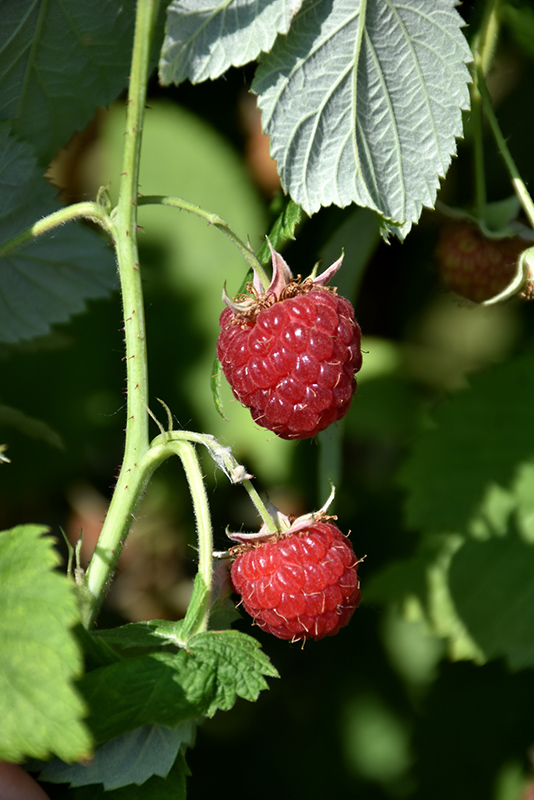
PLANT FINDER
Height: 6 feet Spread: 6 feet
Sunlight:
Hardiness Zone: 4 Other Names: Meeker Red Raspberry Description: A hardy disease-resistant variety producing dark red fruit with great flavor for fresh eating, canning and pies; produces fruit on second year canes; requires careful placement in the landscape, a specific pruning regimen and protection from birds Edible Qualities Meeker Raspberry is a medium-sized shrub that is typically grown for its edible qualities. It produces clusters of red heart-shaped berries which are usually ready for picking in early summer. The berries have a sweet taste and a juicy texture. The berries are most often used in the following ways: Features & Attributes Meeker Raspberry has rich green deciduous foliage on a plant with an upright spreading habit of growth. The oval compound leaves do not develop any appreciable fall color. It features an abundance of magnificent red berries in early summer. This is an open multi-stemmed deciduous shrub with an upright spreading habit of growth. Its relatively coarse texture can be used to stand it apart from other landscape plants with finer foliage. This is a high maintenance plant that will require regular care and upkeep. Each spring, cut back all dead and two-year old canes to the ground, leaving only last year's growth standing. It is a good choice for attracting birds to your yard. Gardeners should be aware of the following characteristic(s) that may warrant special consideration; Aside from its primary use as an edible, Meeker Raspberry is sutiable for the following landscape applications; Planting & Growing Meeker Raspberry will grow to be about 6 feet tall at maturity, with a spread of 6 feet. It tends to be a little leggy, with a typical clearance of 1 foot from the ground, and is suitable for planting under power lines. It grows at a fast rate, and under ideal conditions can be expected to live for approximately 10 years. This is a self-pollinating variety, so it doesn't require a second plant nearby to set fruit. This shrub may not always play well with others; as such, it is best grown in its own designated garden space or isolated area of an edibles garden. It should only be grown in full sunlight. It prefers to grow in average to moist conditions, and shouldn't be allowed to dry out. It is not particular as to soil type or pH. It is somewhat tolerant of urban pollution. This particular variety is an interspecific hybrid. It can be propagated by division; however, as a cultivated variety, be aware that it may be subject to certain restrictions or prohibitions on propagation.![]()
![]()
![]()
![]()
![]()
![]()
![]()
![]()
![]()

